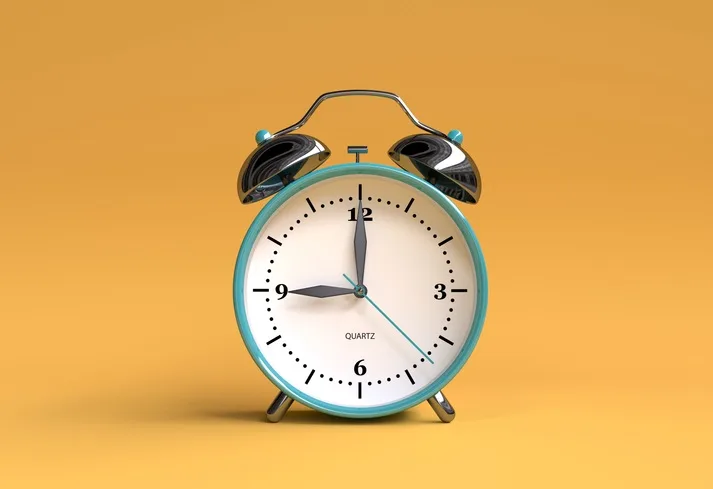
The time change is coming. Here are four terrible side effects
You know the drill: Spring forward, fall back. And the clocks will indeed shortly be moving up an hour, marking the start of Daylight Saving Time.
Once again, Canadians are set for their twice-annual bout with chronological confusion, with clocks set to spring forward at 2 a.m. on Sunday, March 12.
QUICK FACTS:
Clocks 'spring forward' one hour at 2 a.m. Sunday, March 12
Observed in all of Canada with some exceptions, including most of Saskatchewan
Daylight Saving Time is observed in around 70 countries
Timekeeping is considered a provincial and territorial responsibility
After the time change, it'll be a little darker in the mornings, and the sun will seem to set later, giving us a little more daylight in the evening. The switch isn't universally popular, and according to science, Daylight Saving Time may actually be harmful.
Here are four terrible effects of Daylight Saving Time to mull over before it ends in the fall.
IT DOES BAD THINGS TO THE ECONOMY
From thrifty Ben Franklin, who thought changing clocks would save on candles for part of the year, to wartime planners who advocated it as an energy saver in the First World War, the bottom line of Daylight Saving Time was always to save money or resources.
Unfortunately, that might not actually be the case.
According to National Geographic, Indiana provided a great before-and-after case study when Daylight Saving Time was implemented across the state in 2006, where before it was only observed in some locations.
The result: Higher electricity bills, as the longer day meant residents ran the AC an hour longer.

Courtesy: Getty Images.
In Australia, meanwhile, the 2000 Summer Olympics prompted some parts of the country to extend Daylight Saving Time, while others kept it the same. A subsequent study found power costs from lighting went down in the evenings, but rose in the mornings, negating any savings.
As well, there's a measurable productivity hit in the immediate aftermath of the change. A 2013 study found the lost hour cost the U.S. economy around $434 million.
And if you drill down in the science to the level of the average worker, you'll find plenty of terrible individual effects as well.
IT (TEMPORARILY) TURNS US INTO LOUSY WORKERS
It’s not reasonable to expect an artificially bleary-eyed workforce to perform at its usual level the Monday after the time change, and most people wouldn’t be surprised at what the science says.
One study, for example, found a marked uptick in “cyberloafing” – basically, wasting time online at work rather than doing your job. Writing in the New York Times, the researchers reported that for every hour of sleep lost, workers in their study spent about 20 per cent of their time on a task cyberloafing (We’d love to see the Facebook data on this).
What it comes down to is a marked lack of attention to a task at hand. Wasteful in an office setting. Potentially life-threatening when you’re working in trades.
The same researchers behind the cyberloafing study took a look at workplace injuries in the mining industry as well. They found a six per cent spike in the number of workers who were hurt on the job the Monday after the time change.
Don’t let the relatively low percentage fool you. In a dangerous job like that, a serious injury can put a worker out of commission for weeks or months, if not end their career altogether. So that six per cent increase in injuries amounts to a whopping 67 per cent increase in days of work lost – all from just that one Monday.
And aside from those measurable effects, the researchers claim the lost hour also just made people lousier workers (and bosses), noting they became “less ethical, less morally aware, more prejudiced and more apt to engage in abusive supervision.”
And that’s just when they got to work. Getting there the Monday after the switch carries its own problems, according to the research.
DRIVERS (AND PEDESTRIANS) GET HURT
That lost hour in spring makes for bleary-eyed drivers, especially those who didn’t take advantage of the weekend to adjust their sleep schedules.
In practice, that means more collisions on the roads. The number varies according to jurisdiction, but it's measurable, and definitely linked to the time change.
WATCH BELOW: 9 DAYLIGHT SAVING TIME FACTS THAT WILL KEEP YOU UP TONIGHT
According to the Canadian Centre for Occupational Health and Safety, collisions in B.C. on the first Monday after the spring time change increased by 23 per cent from 2005-2009. CBC reports a similar uptick in Manitoba, which saw 20 per cent more collisions in the spring of 2015.
Collisions can be deadly. An October 2014 study from the University of Colorado (Boulder) saw a 17-per-cent rise in traffic deaths in the U.S.
The fall time change, when Daylight Saving Time ends, doesn’t see a similar threat to drivers, according to accounts. Rather, CBC reports it’s pedestrians who are at risk.
A 2007 Carnegie Mellon University study found pedestrians were three times more likely to be killed in traffic collisions after the fall switch. This time, the risk was greatest after 6 p.m., after the clocks had fallen back.
And as for your own health, here’s what happens with or without morning traffic and cyberloafing…
YOUR RISK OF SERIOUS ILLNESS GOES UP
Losing even a single hour’s sleep can throw off your whole body’s natural rhythms, such that your risk of severe or life-threatening health afflictions goes up.
A 2012 study from the University of Alabama found heart attack risk is up by 10 per cent on the first couple of days after the spring time change.
And as for stroke, a recent Finnish study found the risk was eight per cent higher following the time change. But cancer victims are more at risk, at 25 per cent, as are seniors, at 20 per cent.
The general rates of those two conditions don’t sound too high, but they’re still higher than what most people would prefer.
More ominously: A 2008 study saw an increase in suicides among Australian men (according to Business Insider).
The confusion and bad impact on our health comes in part due to the fact our bodies’ melatonin levels – a key ingredient in inducing sleep – are regulated in part by light. Lack of light means the body will produce more, working against you when you suddenly have to wake up an hour “earlier” for Daylight Saving Time.
Some people can shake it off in a day, others in a few weeks. But it may be more like coping than truly adjusting: According to Business Insider, a 2007 study suggested the body is so attuned to the natural progression of day and night through the seasons, that humans may never actually adjust to Daylight Saving Time.
SOURCES: CBC News | CCOHS | New York Times | Huffington Post | Business Insider | National Geographic
Thumbnail image source: Pixabay/geralt










